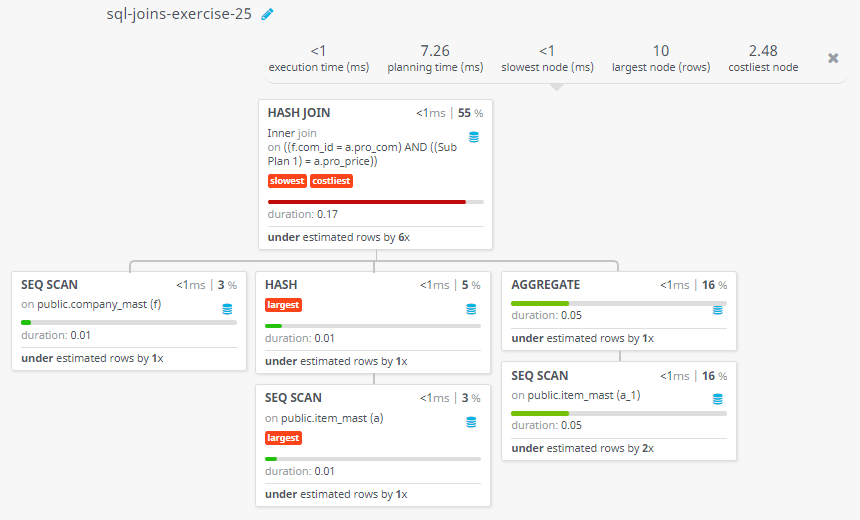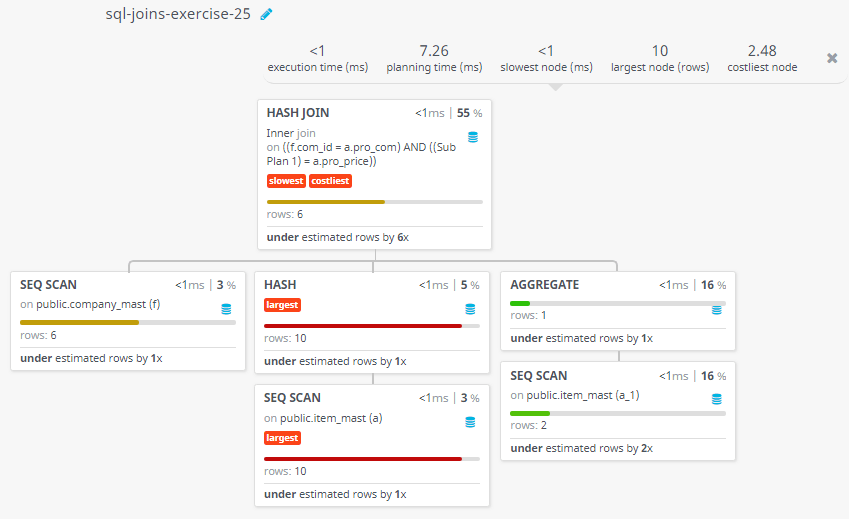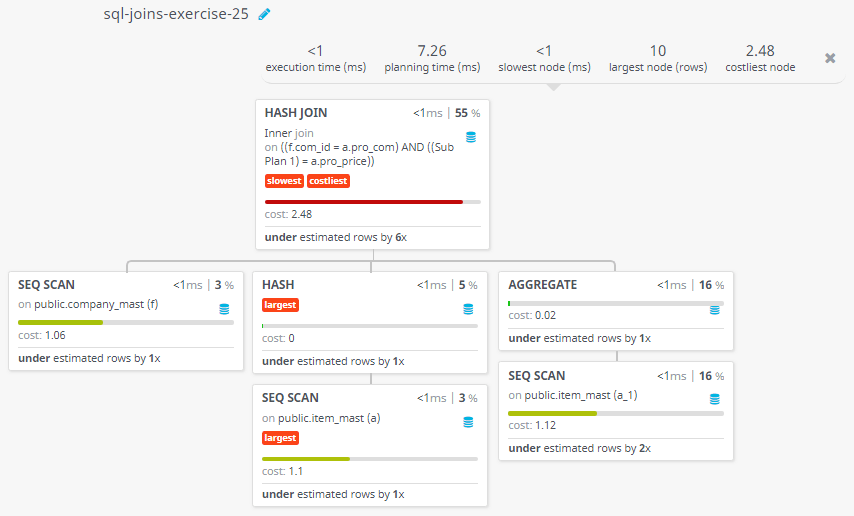SQL Exercise: Display ID and price of most expensive product
25. Most Expensive Product by Company
From the following tables write a SQL query to find the most expensive product of each company. Return pro_name, pro_price and com_name.
Sample table: company_mast
COM_ID COM_NAME
------ -------------
11 Samsung
12 iBall
13 Epsion
14 Zebronics
15 Asus
16 Frontech
Sample table: item_mast
PRO_ID PRO_NAME PRO_PRICE PRO_COM
------- ------------------------- -------------- ----------
101 Mother Board 3200.00 15
102 Key Board 450.00 16
103 ZIP drive 250.00 14
104 Speaker 550.00 16
105 Monitor 5000.00 11
106 DVD drive 900.00 12
107 CD drive 800.00 12
108 Printer 2600.00 13
109 Refill cartridge 350.00 13
110 Mouse 250.00 12
Sample Solution:
-- Selecting specific columns from the result of an inner join between 'item_mast' and 'company_mast' tables
SELECT A.pro_name, A.pro_price, F.com_name
-- Specifying the tables to retrieve data from ('item_mast' as 'A' and 'company_mast' as 'F')
FROM item_mast A
-- Performing an inner join based on the equality of 'pro_com' in 'item_mast' and 'com_id' in 'company_mast'
INNER JOIN company_mast F
ON A.pro_com = F.com_id
-- Adding additional conditions to the join, ensuring the 'pro_price' matches the maximum 'pro_price' for the corresponding company
AND A.pro_price =
(
-- Subquery: Selecting the maximum 'pro_price' for the current company
SELECT MAX(A.pro_price)
FROM item_mast A
WHERE A.pro_com = F.com_id
);
Output of the Query:
pro_name pro_price com_name Monitor 5000.00 Samsung DVD drive 900.00 iBall Printer 2600.00 Epsion ZIP drive 250.00 Zebronics Mother Board 3200.00 Asus Speaker 550.00 Frontech
Explanation:
The said SQL query is selecting the product name (A.pro_name), product price (A.pro_price) and the company name (F.com_name) of an item, by joining the item_mast table A and company_mast table F on the pro_com column of the item_mast table and the com_id column of the company_mast table. It is also using a subquery to find the highest price of item of the same company, and then join it with the outer query to show the product name, product price, and the company name that has the highest price.
Go to:
PREV : Average Price (>=350) by Company.
NEXT : Employee & Department Full Report.
Practice Online
Query Visualization:
Duration:
Rows:
Cost:
For more Practice: Solve these Related Problems:
- Write a SQL query to join company_mast and item_mast and return the product name, price, and company name for the product with the maximum price per company using a subquery.
- Write a SQL query to list each company’s most expensive product by grouping on company and using the MAX() function on pro_price.
- Write a SQL query to display the highest-priced product for each company, ensuring that only one record per company is returned.
- Write a SQL query to retrieve pro_name, pro_price, and com_name from a join of the tables, filtering to include only the product with the highest price for each company.
Have another way to solve this solution? Contribute your code (and comments) through Disqus.
What is the difficulty level of this exercise?
Test your Programming skills with w3resource's quiz.



